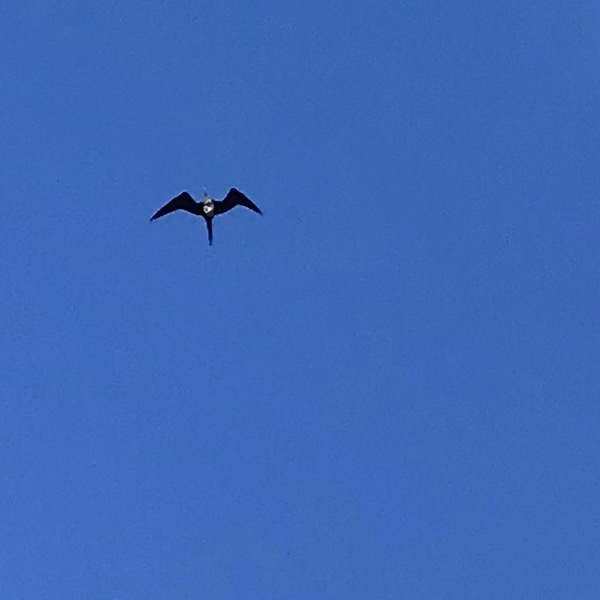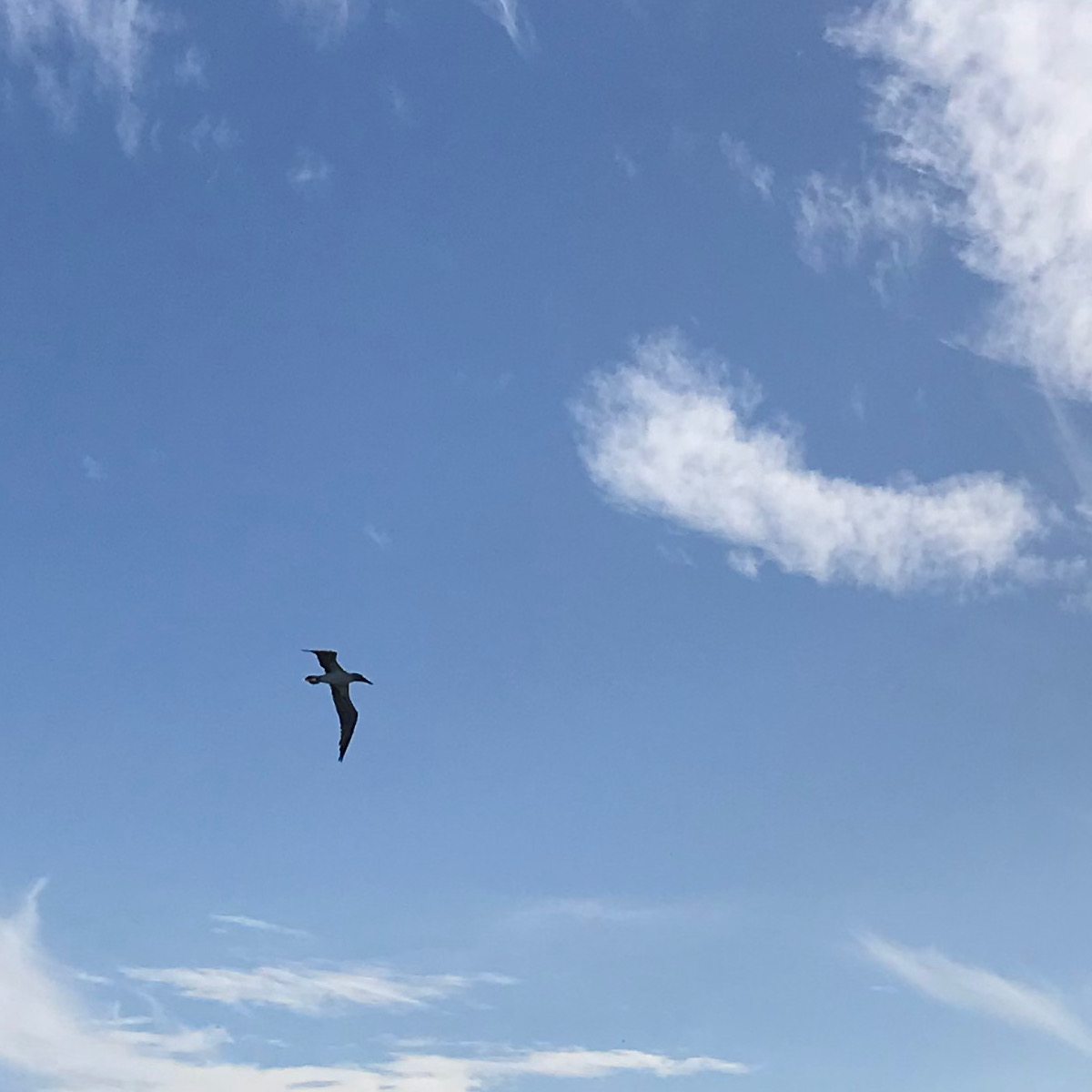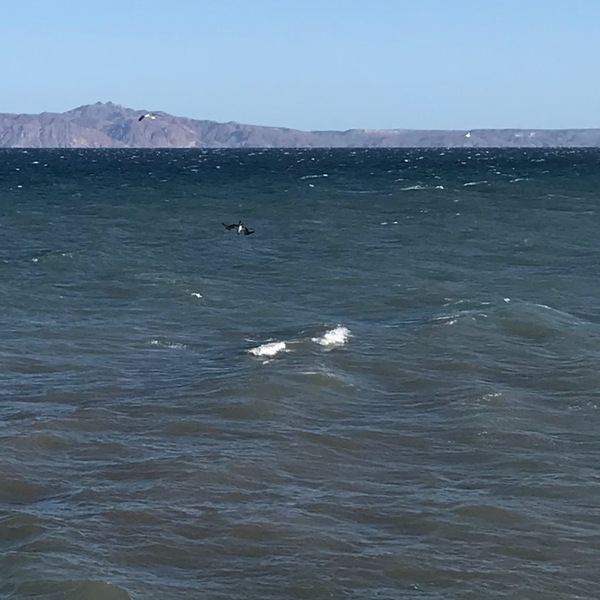Baja sea birds
This afternoon in late November a fresh breeze stirs up moderate waves and white horses on the Sea of Cortéz between Loreto and Isla Carmen. Watching from the small marina in Loreto, four different species of sea bird work the wind and the uplift of air off of the sea wall.

One is the magnificent frigate bird. These have long wing spans with an aggressive gull bend such that the points of the wings where they bend from forward to rear ward sweep extend out in front of their heads. They have forked tails (not seen in the photo) such that the locals call them “tijeras”, which means scissors.
Mostly the frigate birds like to soar and don’t do much else. According to the Wikipedia article they sometimes remain airborne for days and even sleep for brief periods, at night, while soaring at high altitude. They don’t settle upon or dive in the water, but rather steal fish from birds that do. Their wing form is so well suited to soaring that they seldom need to flap their wings. They soar in groups, magnificent to watch.

Along with the frigate birds are the familiar gulls. The gulls are more versatile. They fly by beating their wings, soar, land on the water, choose prominent places on shore to stand and watch. Like the frigate birds, they can be thieves, but mostly scavenge whatever floats up that is edible.

Together with the gulls are the terns. You might not notice at first their difference; however, the terns have wings with a narrower chord that are longer relative to the lengths of their bodies. Where the gulls’ wings are more forward, the terns’ wings are about mid-way on their bodies.

The biggest difference between the gulls and the terns is that the terns are active fishers. They soar, fly, and hover, suddenly folding their wings and diving headlong at great speed into the water. A half a second later they emerge with a fish, swallow it quickly, and take to the air again.
Both the terns and the gulls operate in flocks, circling back into one another to remain in a rough group. Unlike the gulls, the terns don’t appear to fly off by themselves so often to go solo, or stand on the top of a rock or sit on the water.

The fourth species is the pelican. Like the terns, they are active fishers who dive into the surface of the water to grab fish swimming below. Their dives are sudden, rapid, and at an angle that the fish don’t see them coming.
The pelicans are larger than the terns, with bodies and heads like a duck or goose and broad wings more like an eagle or falcon, with feathered tips. Their most distinctive feature is their long bill, of course. The lower portion of their bill has the distinctive pelican sack that the upper portion covers.
The pelicans will soar and fish in pairs or small groups. They also sometimes fly in well organized flocks. As flocks, the pelicans behave more like geese than like gulls or terns. They string themselves out in long lines, each taking advantage of the vortices of air from the wings of the pelican ahead of them. On this day, a group of a hundred or so was seen flying in files, low over the water.
Flying low on the water into the strong wind, they took advantage of the extra lift they get from the air compressed between their wings and bodies and the surface, something we call “ground effect” in aviation. The resistance of the sea surface to the wind slows the wind, so they had less wind to work against. Third, they advantaged the already mentioned vortex wake of their companions ahead. What marvelous aviators they are, the pelicans.
Soaring frigate birds, diving terns and pelicans, gulls kibitzing on the scene and keeping an eye on things. Plenty of fish in the sea for all of them. A great blue sky. The wind and the waves and the birds in their perfect world.